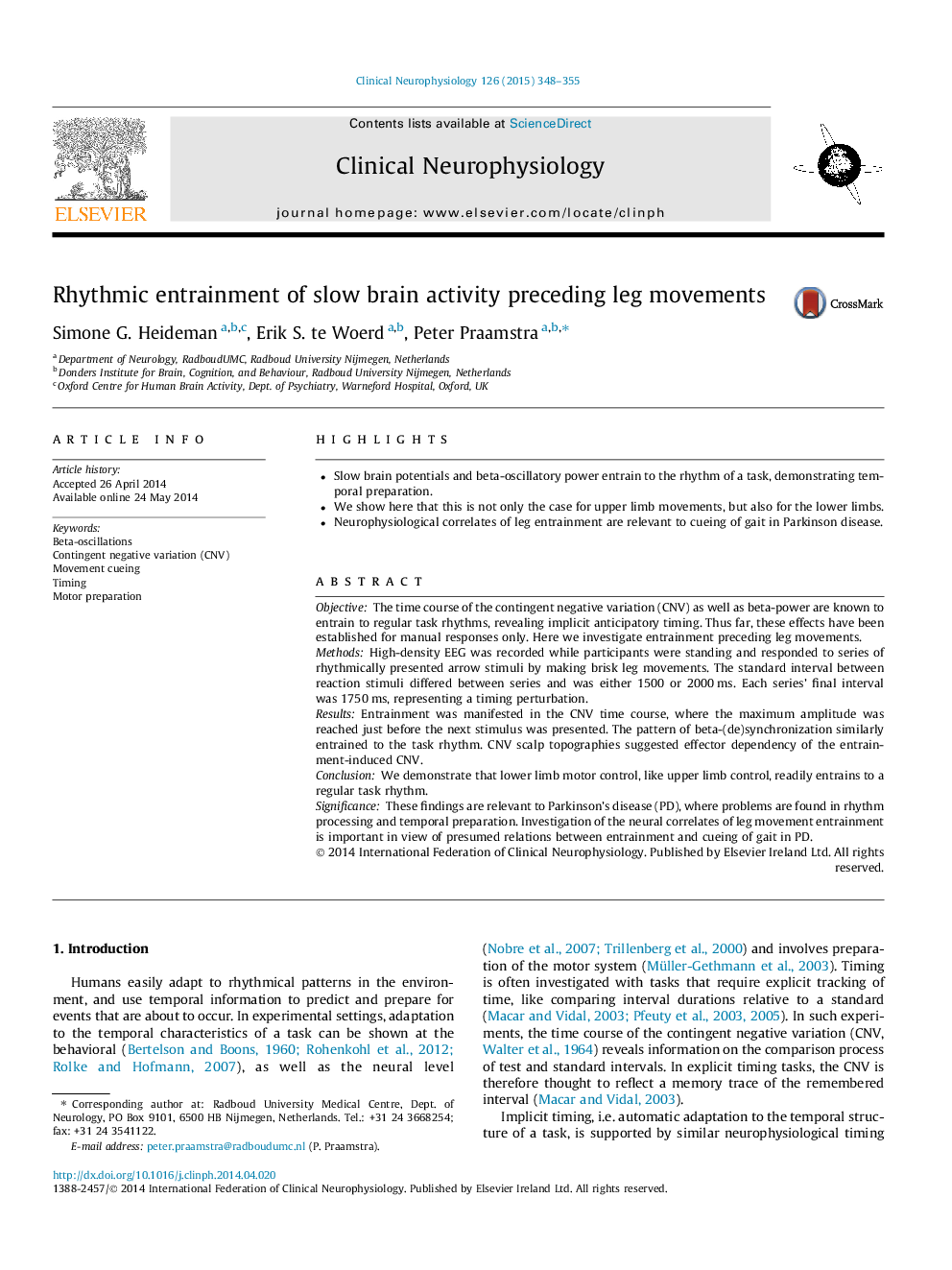| Article ID | Journal | Published Year | Pages | File Type |
|---|---|---|---|---|
| 3043078 | Clinical Neurophysiology | 2015 | 8 Pages |
•Slow brain potentials and beta-oscillatory power entrain to the rhythm of a task, demonstrating temporal preparation.•We show here that this is not only the case for upper limb movements, but also for the lower limbs.•Neurophysiological correlates of leg entrainment are relevant to cueing of gait in Parkinson disease.
ObjectiveThe time course of the contingent negative variation (CNV) as well as beta-power are known to entrain to regular task rhythms, revealing implicit anticipatory timing. Thus far, these effects have been established for manual responses only. Here we investigate entrainment preceding leg movements.MethodsHigh-density EEG was recorded while participants were standing and responded to series of rhythmically presented arrow stimuli by making brisk leg movements. The standard interval between reaction stimuli differed between series and was either 1500 or 2000 ms. Each series’ final interval was 1750 ms, representing a timing perturbation.ResultsEntrainment was manifested in the CNV time course, where the maximum amplitude was reached just before the next stimulus was presented. The pattern of beta-(de)synchronization similarly entrained to the task rhythm. CNV scalp topographies suggested effector dependency of the entrainment-induced CNV.ConclusionWe demonstrate that lower limb motor control, like upper limb control, readily entrains to a regular task rhythm.SignificanceThese findings are relevant to Parkinson’s disease (PD), where problems are found in rhythm processing and temporal preparation. Investigation of the neural correlates of leg movement entrainment is important in view of presumed relations between entrainment and cueing of gait in PD.
